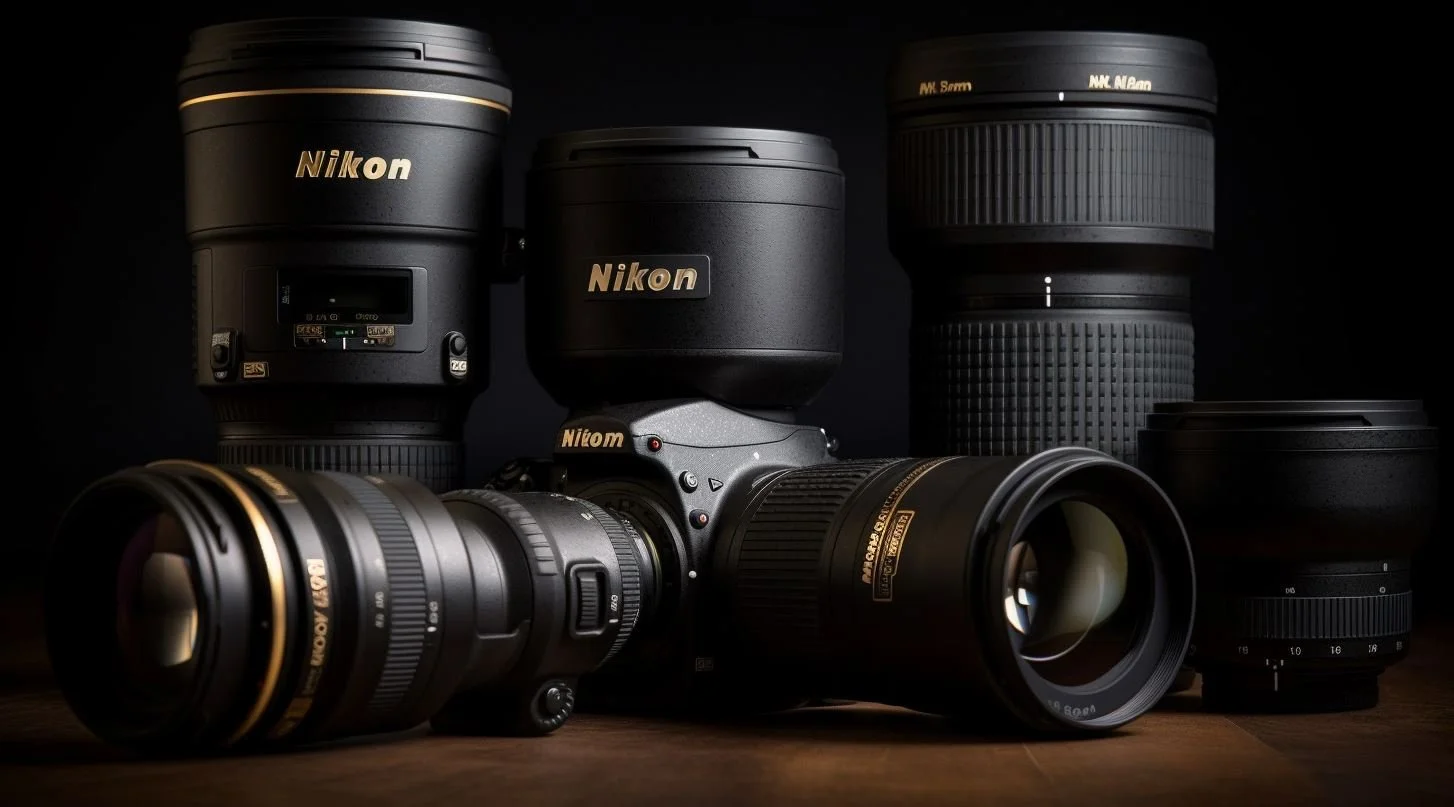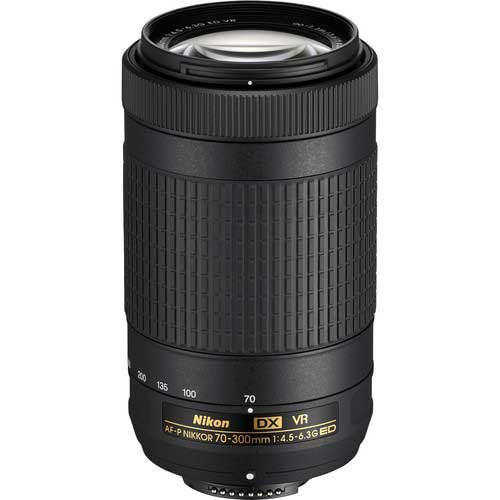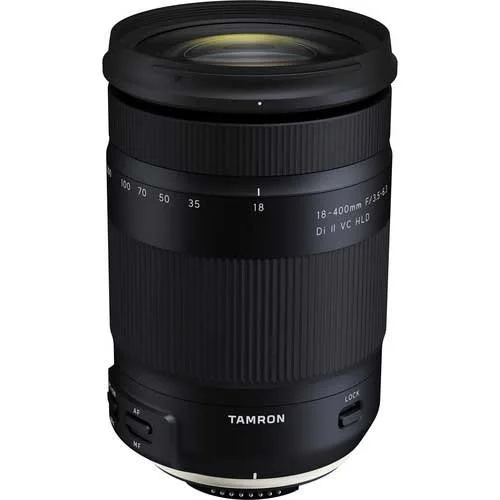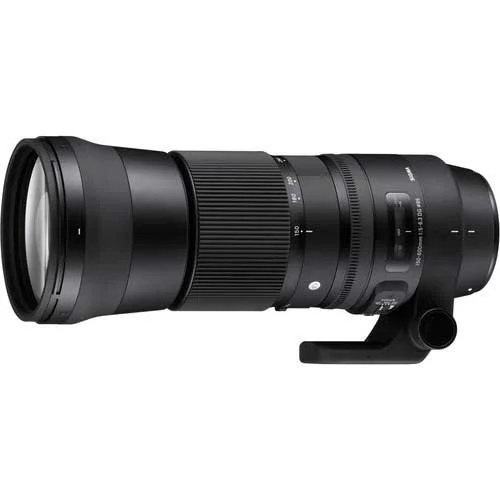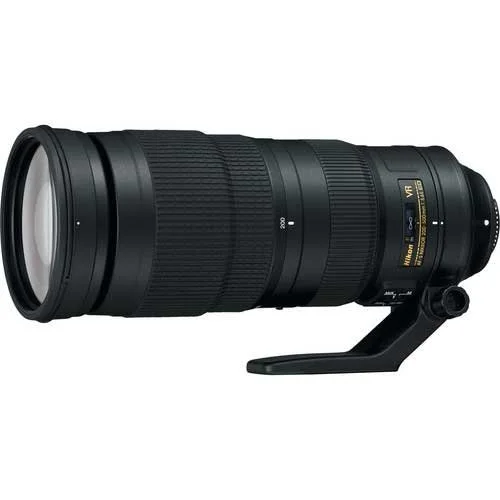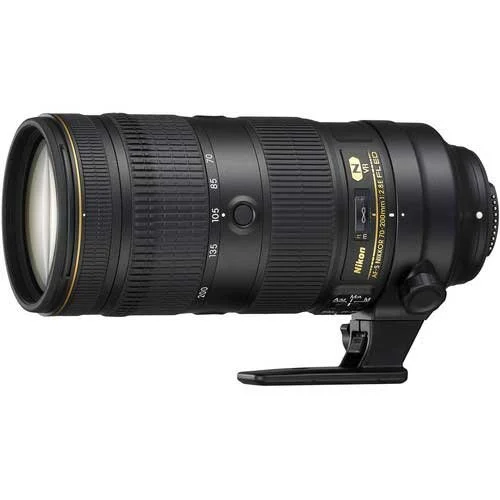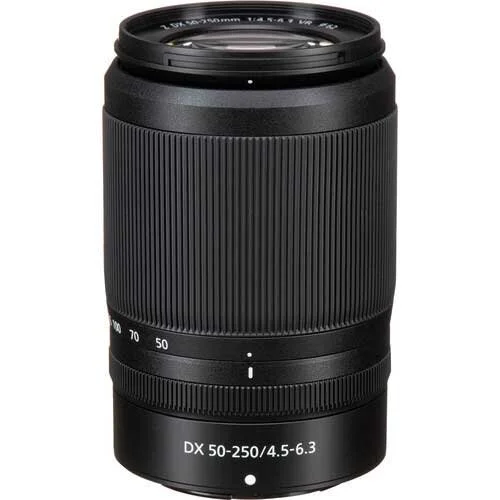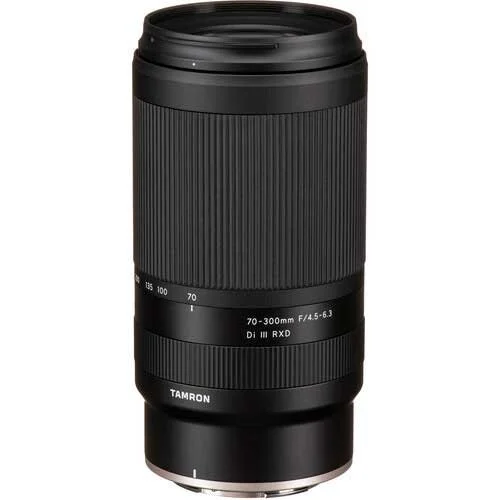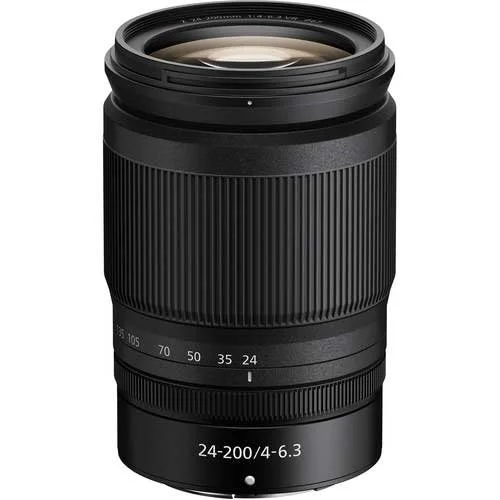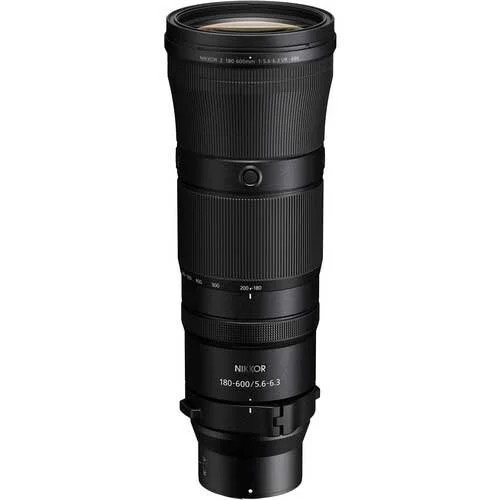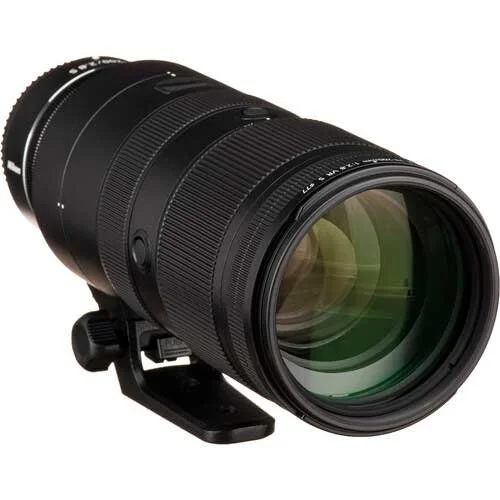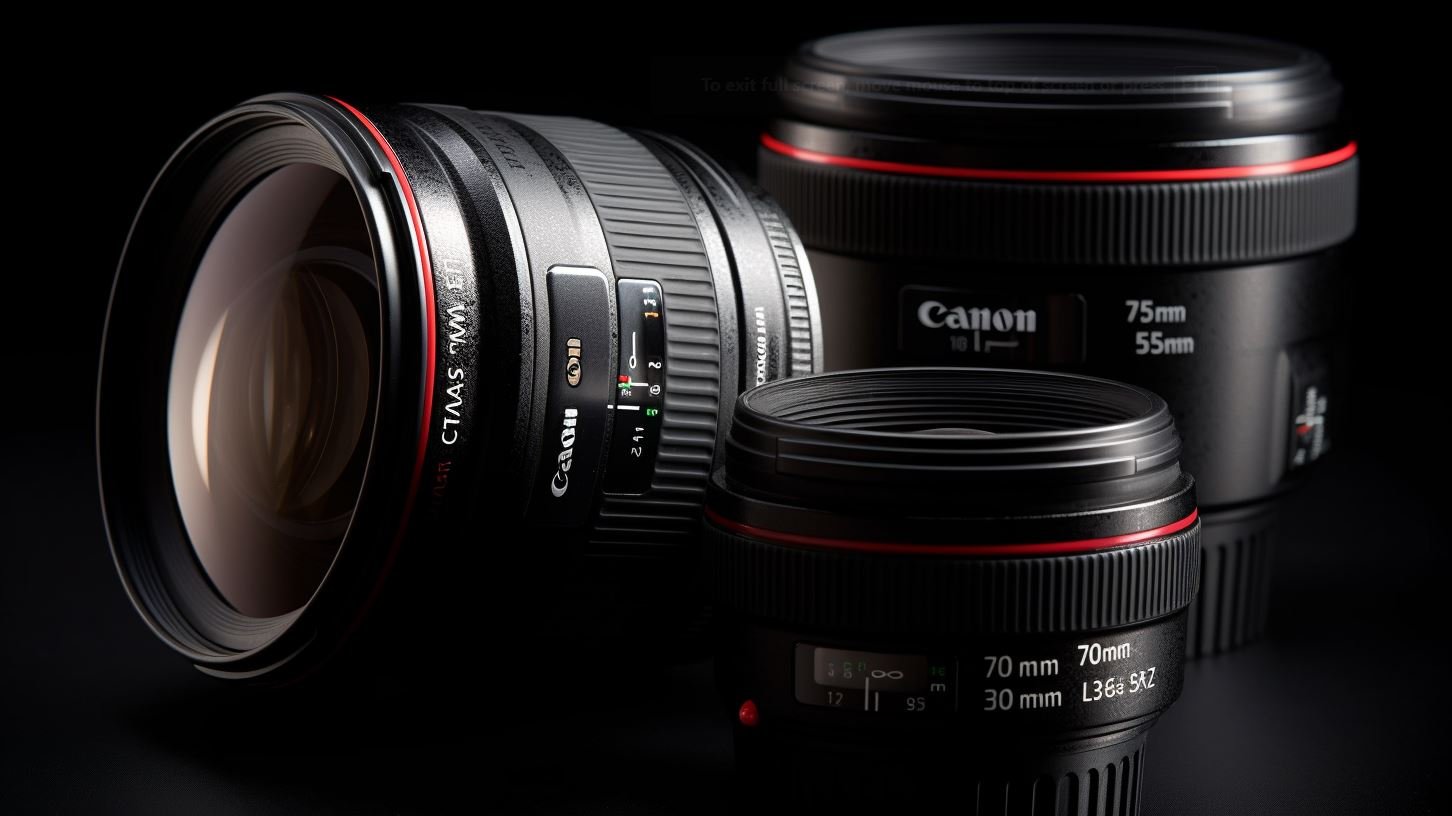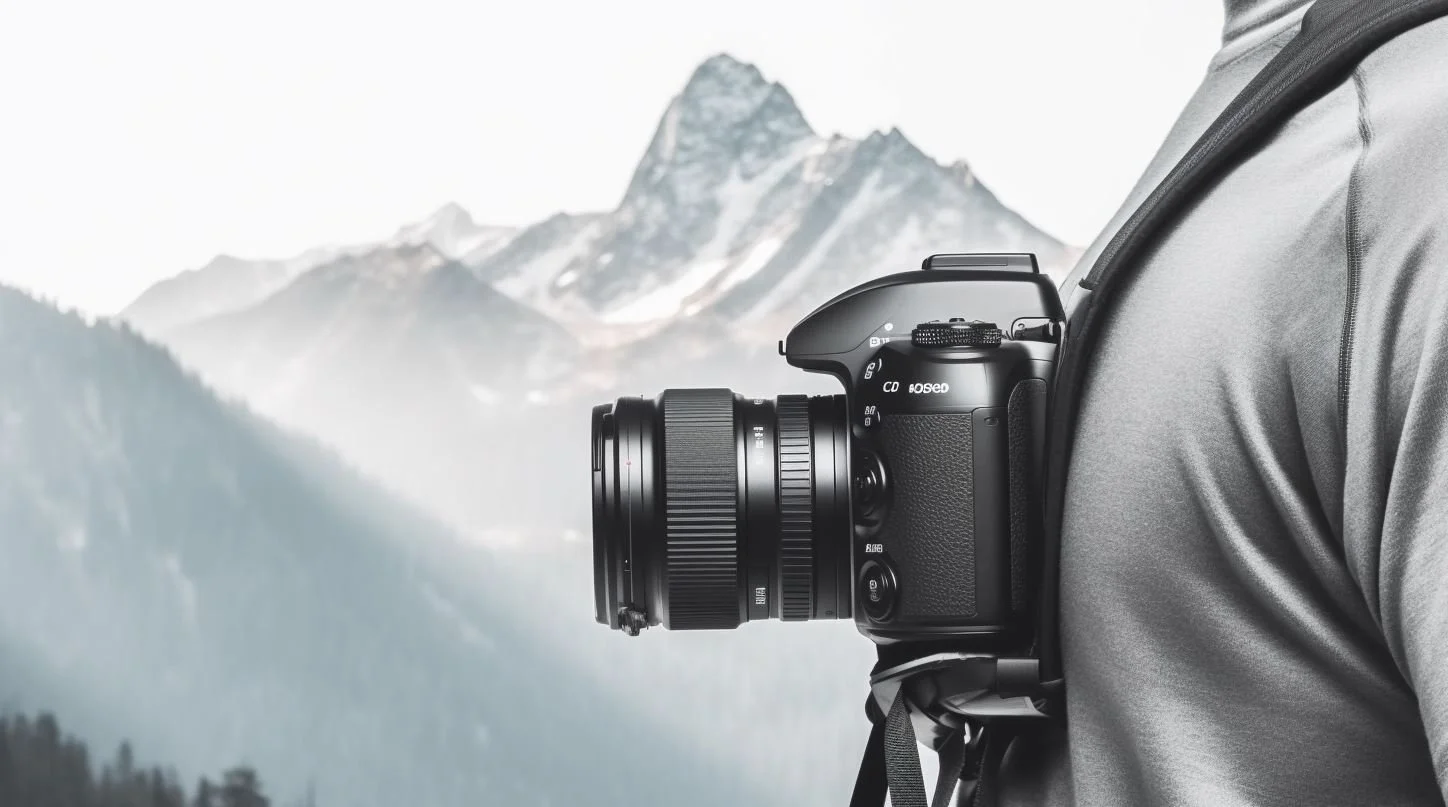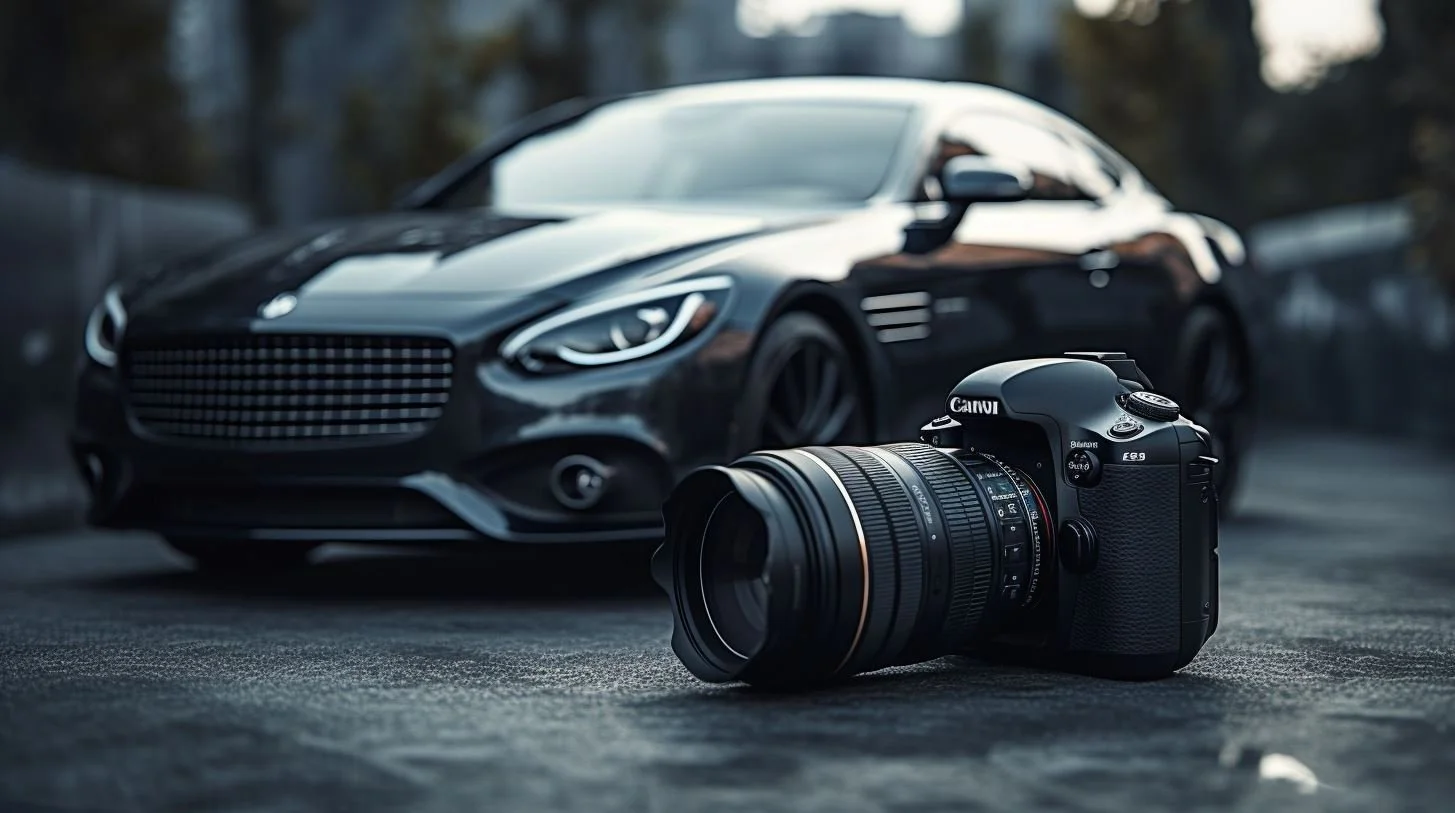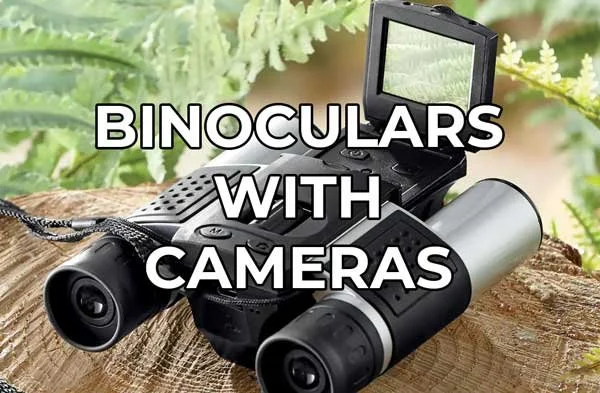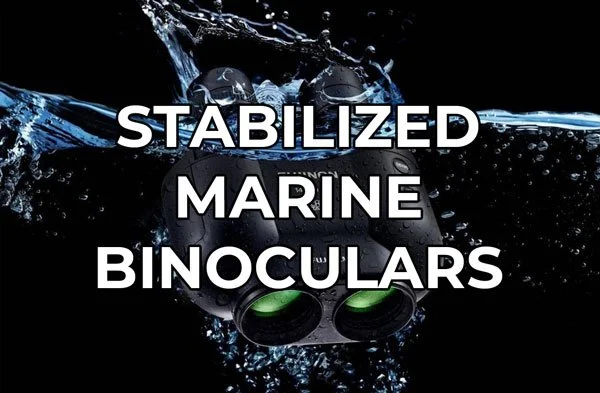Best Wildlife Lens for Nikon
Capturing Nature's Symphony: Finding Your Perfect Nikon Lens
Venturing into the vast world of wildlife photography with a Nikon camera? '
Whether you're capturing the elusive nuances of a snow leopard's gaze or the grandeur of an eagle's flight, the lens you choose can make or break your shots.
With Nikon's extensive history in camera technology, photographers are presented with a myriad of options, spanning both their tried-and-true DSLR (F-Mount) systems and their cutting-edge Mirrorless (Z-Mount) offerings.
But with so many choices, how do you discern which lens is right for your wildlife adventures?
In this comprehensive guide, we'll delve deep into the specifics, offering you a tailored buyer's guide complete with top Nikon lens recommendations for both DSLR and Mirrorless camera bodies.
Whether you're a seasoned pro or an aspiring enthusiast, gear up and let's find the perfect lens to bring your wildlife visions to life!
Quick Links:
DSLR (F-Mount)
($) Nikon 70-300mm f/4.5-6.3G ED VR - Best for beginner wildlife photographers who want an affordable, powerful zoom.
($$) Tamron 18-400mm f/3.5-6.3 Di II VC HLD - Best for wildlife photographers seeking increased reach at a great price.
($$$) Sigma 150-600mm f/5-6.3 DG OS HSM - Best for birds in flight and dangerous animals without spending a fortune.
($$$$) Nikon 200-500mm f/5.6E ED VR - Best for professional wildlife photographers demanding maximum performance.
($$$$) Nikon 70-200mm f/2.8 FL ED VR - Best for wildlife photography during dawn/dusk and other low-light scenarios.
Mirrorless (Z-Mount)
DSLR F-Mount Zoom Lenses
(sorted by price from ↓↑)
Best Budget
Nikon 70-300mm f/4.5-6.3G ED VR
Best for beginner wildlife photographers who want an affordable, powerful zoom.
| Focal Length: | 70 to 300mm |
| Maximum Aperture: | f/4.5 to 6.3 |
| Lens Mount: | Nikon F |
| Lens Format Coverage: | APS-C |
| Image Stabilization: | Yes |
| Filter Size: | 58 mm |
| Weight: | 14.64 oz |
Great Value
Tamron 18-400mm f/3.5-6.3 Di II VC HLD
Best for wildlife photographers seeking increased reach at a great price.
| Focal Length: | 18 to 400mm |
| Maximum Aperture: | f/3.5 to 6.3 |
| Lens Mount: | Nikon F |
| Lens Format Coverage: | APS-C |
| Image Stabilization: | Yes |
| Filter Size: | 72 mm |
| Weight: | 24.8 oz |
Budget SuperZoom
Sigma 150-600mm f/5-6.3 DG OS HSM
Best for birds in flight and dangerous animals without spending a fortune.
| Focal Length: | 150 to 600mm |
| Maximum Aperture: | f/5 to 6.3 |
| Lens Mount: | Nikon F |
| Lens Format Coverage: | Full-Frame |
| Image Stabilization: | Yes |
| Filter Size: | 95 mm |
| Weight: | 64.48 oz |
Best Overall
Nikon 200-500mm f/5.6E ED VR
Best for professional wildlife photographers demanding maximum performance.
| Focal Length: | 200 to 500mm |
| Maximum Aperture: | f/5.6 |
| Lens Mount: | Nikon F |
| Lens Format Coverage: | Full-Frame |
| Image Stabilization: | Yes |
| Filter Size: | 95 mm |
| Weight: | 81.12 oz |
Fastest Aperture
Nikon 70-200mm f/2.8 FL ED VR
Best for wildlife photography during dawn/dusk and other low-light scenarios.
| Focal Length: | 70 to 200mm |
| Maximum Aperture: | f/2.8 |
| Lens Mount: | Nikon F |
| Lens Format Coverage: | Full-Frame |
| Image Stabilization: | Yes |
| Filter Size: | 77 mm |
| Weight: | 50.4 oz |
Mirrorless Z-Mount Zoom Lenses
(sorted by price from ↓↑)
Best Budget
Nikon NIKKOR Z DX 50-250mm f/4.5-6.3 VR
Best for mirrorless wildlife photographers on a serious budget.
| Focal Length: | 50 to 250mm |
| Maximum Aperture: | f/4.5 to 6.3 |
| Lens Mount: | Nikon Z |
| Lens Format Coverage: | APS-C |
| Image Stabilization: | Yes |
| Filter Size: | 62 mm |
| Weight: | 14.29 oz |
Great Value
Tamron 70-300mm f/4.5-6.3 Di III RXD
Ideal focal length range for most wildlife subjects at an affordable price.
| Focal Length: | 70 to 300mm |
| Maximum Aperture: | f/4.5 to 6.3 |
| Lens Mount: | Nikon Z |
| Lens Format Coverage: | Full-Frame |
| Image Stabilization: | No |
| Filter Size: | 67 mm |
| Weight: | 19.2 oz |
Pro-Level 200mm
Nikon NIKKOR Z 24-200mm f/4-6.3 VR
Premium option for pros who are skilled at getting the most out of a 200mm in the field.
| Focal Length: | 24 to 200mm |
| Maximum Aperture: | f/4 to 6.3 |
| Lens Mount: | Nikon Z |
| Lens Format Coverage: | Full Frame |
| Image Stabilization: | Yes |
| Filter Size: | 67 mm |
| Weight: | 20 oz |
Best SuperZoom
Nikon NIKKOR Z 180-600mm f/5.6-6.3 VR
One of the best choices for Nikon wildlife photographers if you can afford it.
| Focal Length: | 180 to 600mm |
| Maximum Aperture: | f/5.6 to 6.3 |
| Lens Mount: | Nikon Z |
| Lens Format Coverage: | Full-Frame |
| Image Stabilization: | Yes |
| Filter Size: | 95 mm |
| Weight: | 68.8 oz |
Fastest Aperture
Nikon NIKKOR Z 70-200mm f/2.8 VR S Lens
At f/2.8 throughout the full focal length range, this lens excels in low-light conditions.
| Focal Length: | 70 to 200mm |
| Maximum Aperture: | f/2.8 |
| Lens Mount: | Nikon Z |
| Lens Format Coverage: | Full-Frame |
| Image Stabilization: | Yes |
| Filter Size: | 77 mm |
| Weight: | 47.84 oz |
Buyer’s Guide to the Best Wildlife Lens for Nikon Cameras
Wildlife photography can be a challenging and rewarding endeavor, and your choice of lens can make or break your ability to capture that perfect shot. Here's a comprehensive guide to help you choose the best lens for your wildlife adventures:
1. Understanding Focal Length
Telephoto and Super-Telephoto: Wildlife often requires long focal lengths (above 200mm) to get close-ups without disturbing the subjects. Common choices are in the 300mm to 600mm range.
-
When it comes to wildlife photography, choosing the right focal length can mean the difference between a striking close-up of a rare animal and a distant, unimpressive speck. But what is focal length, and how does it impact your wildlife shots? Dive into our ultimate guide to grasp this crucial concept.
1. What is Focal Length?
Definition: The focal length of a lens, usually measured in millimeters (mm), refers to the distance between the lens's optical center and the camera sensor. This length determines the lens's angle of view (how much of the scene it captures) and magnification (how large individual elements appear).
Short Focal Length: Provides a wide field of view but smaller magnification. (e.g., 14mm, 24mm)
Long Focal Length: Provides a narrow field of view with larger magnification. Essential for wildlife photography. (e.g., 300mm, 500mm, 800mm)
2. Why is Focal Length Critical for Wildlife Photography?
Safety and Respect: Some animals can be dangerous or easily disturbed. A longer focal length allows photographers to keep a safe and respectful distance.
Isolation: Longer focal lengths help isolate the subject from its surroundings, making the animal stand out.
Details: They allow you to capture intricate details which are crucial in wildlife photography, such as the feathers of a bird or the fur pattern on a mammal.
3. Focal Length Ranges and Their Uses:
Telephoto (70-200mm):
Pros: Versatile range suitable for larger or closer wildlife, often lighter and more affordable.
Cons: Might not provide enough magnification for small or distant wildlife.
Super-Telephoto (300mm and beyond):
Pros: Ideal for capturing distant or small subjects like birds.
Cons: Often heavy and expensive. Requires good stabilization techniques or equipment.
4. Prime vs. Zoom Lenses:
Prime Lenses (Fixed Focal Length):
Often sharper and may have wider maximum apertures.
You "zoom with your feet," meaning you move closer or farther from your subject to adjust framing.
Zoom Lenses:
Offer flexibility in adjusting your composition without changing your position.
Might sacrifice a bit in sharpness or maximum aperture.
5. Crop vs. Full-frame Sensors and Effective Focal Length:
A crop-sensor camera (APS-C, for example) will effectively increase the focal length of a lens due to its smaller sensor size. For instance, a 300mm lens on a crop sensor with a 1.5x crop factor will have an effective focal length of 450mm.
6. Considerations and Tips:
Weight and Portability: Longer focal lengths often mean larger, heavier lenses. Think about the practicality if you're traveling or trekking.
Stabilization: Longer focal lengths magnify camera shake. Image stabilization (in the lens or camera) or tripods become essential.
Practice: If you're new to long lenses, practice handholding and focusing techniques to improve your shots.
2. Aperture
Fast Aperture (f/2.8, f/4): A lens with a wide aperture can let in more light, which is ideal for low-light conditions, especially during dawn or dusk. It also provides a pleasing bokeh (blurred background) that makes the subject stand out.
-
In wildlife photography, aperture plays a crucial role in determining not just the amount of light that enters the camera, but also the depth of field and the ability to isolate subjects. This guide offers a comprehensive look into the importance of aperture and how to select the best lenses based on this parameter.
1. What is Aperture?
Definition: Aperture refers to the opening in a lens through which light passes to the camera sensor. It's measured in f-stops (e.g., f/2.8, f/4, f/5.6). The smaller the f-number, the larger the aperture and vice versa.
2. Aperture’s Dual Role: Light and Depth of Field
Light: A wider aperture (like f/2.8) allows more light, facilitating faster shutter speeds, especially beneficial in low-light conditions or when capturing fast-moving animals.
Depth of Field (DoF): Wider apertures produce a shallower depth of field, blurring the background and foreground. This isolates the subject, making it stand out.
3. Prime vs. Zoom Lenses and Aperture
Prime Lenses: Often have wider maximum apertures (e.g., f/1.4, f/2, f/2.8) providing benefits in low light and greater subject isolation. However, they have a fixed focal length, limiting versatility in framing.
Zoom Lenses: These are versatile but may have variable apertures across their zoom range (e.g., f/3.5-5.6). Some high-end zoom lenses maintain a constant aperture like f/2.8 throughout.
4. Fixed vs. Variable Aperture in Zoom Lenses
Fixed Aperture: These lenses maintain the same widest aperture throughout the zoom range, e.g., 70-200mm f/2.8. Great for consistent light input and depth of field.
Variable Aperture: The widest aperture changes as you zoom, e.g., 70-300mm f/4-5.6. While often more affordable, they can be challenging in varying light conditions.
5. Aperture and Bokeh
Bokeh: Refers to the aesthetic quality of the out-of-focus areas in an image. Lenses with wider apertures can produce creamy and pleasing bokeh, especially desired to make wildlife subjects pop against a smooth, blurred background.
6. Considerations for Wildlife Photography
Low-light Performance: Dawn and dusk are prime times for wildlife activity. A lens with a wider aperture helps in such low-light scenarios.
Flexibility: While a wide aperture is beneficial, wildlife scenarios can be unpredictable. Sometimes, increased depth of field (smaller aperture) can be useful for capturing broader scenes or groups of animals.
Size and Weight: Lenses with wider apertures, especially telephoto ones, tend to be bulkier and heavier. Consider this if you're on the move.
Price: Wider aperture lenses, particularly those that maintain constant apertures across zoom ranges, tend to be pricier.
3. Image Stabilization (IS)
Vital for Long Lenses: At long focal lengths, even minor hand movements can introduce blur. IS helps counteract this.
-
In the dynamic world of wildlife photography, capturing sharp images is the Holy Grail. Given the unpredictable nature of animals and often challenging environments, image stabilization (IS) in lenses has become indispensable. Let's delve deeper into understanding IS and how it can significantly improve your wildlife shots.
1. What is Image Stabilization (IS)?
Definition: IS is a technology used in camera lenses (and sometimes in camera bodies) to counteract camera shake. This shake can be due to hand movements, especially pronounced when using telephoto lenses or shooting at slow shutter speeds.
2. Types of Image Stabilization:
Optical Image Stabilization (OIS): Uses gyroscopic sensors to detect camera shake and compensates by moving lens elements or the sensor.
Digital (or Electronic) Image Stabilization (DIS or EIS): Adjusts images during processing. While this can be effective for video, it's less preferred for still photography as it can compromise image quality.
Sensor-shift stabilization: Instead of stabilizing the lens, the camera's sensor is moved to counteract camera shake.
3. Benefits in Wildlife Photography:
Slower Shutter Speeds: IS allows you to shoot at slower shutter speeds without introducing motion blur.
Telephoto Advantage: The longer the focal length, the more any camera shake is magnified. IS is crucial when using telephoto lenses, often a staple in wildlife photography.
Flexibility: Especially beneficial when shooting from unstable positions or platforms, like boats.
4. Points to Consider:
Stabilization Axis: Basic IS systems stabilize along two axes (up-down and left-right). More advanced systems offer 3, 4, or even 5-axis stabilization, which can be more effective, especially during panning or tilting.
Compensation Value: Manufacturers often rate IS by how many stops it can compensate. For instance, a 5-stop stabilization means you can use a shutter speed 32 times slower than without stabilization.
5. Lens vs. Body Image Stabilization:
Lens Stabilization: Directly compensates for camera shake within the lens. Often more effective for longer focal lengths.
Body Stabilization: The camera body compensates for shake by moving the sensor. This can be effective for wide to mid-range focal lengths.
Dual IS: Some systems combine lens and body stabilization for even better results.
4. Lens Types
Prime Lenses: These have a fixed focal length, like 500mm. They're often sharper and have faster apertures but are less versatile than zooms.
Zoom Lenses: Allow you to vary the focal length, like 100-400mm. They're versatile but can sometimes compromise on maximum aperture and sharpness.
-
Wildlife photography often takes photographers into challenging environments to capture elusive subjects. The lens you choose can make a monumental difference in the quality, composition, and effect of your shots. This guide aims to introduce you to the types of lenses ideal for wildlife photography.
1. Introduction to Lens Types:
Prime Lenses: Fixed focal length, generally sharper, often with wider maximum apertures.
Zoom Lenses: Variable focal length offering flexibility but sometimes at the cost of maximum aperture size or sharpness.
2. Telephoto Lenses (70mm to 200mm):
Usage: Ideal for larger animals or those that might not be extremely distant. Often used in safaris or controlled environments.
Benefits: Portable, often with wide apertures that provide beautiful bokeh.
Popular Choices (as of 2021):
Canon EF 70-200mm f/2.8L IS III USM
Nikon AF-S NIKKOR 70-200mm f/2.8E FL ED VR
Sony FE 70-200mm f/2.8 GM OSS
3. Super-Telephoto Lenses (300mm and beyond):
Usage: A staple in wildlife photography, these are essential for photographing distant or small subjects like birds.
Benefits: Provides significant magnification, great for isolating subjects and blurring backgrounds.
Considerations: Often heavy and can be challenging to hand-hold. A tripod or monopod is usually recommended.
5. Weight and Size
Wildlife photography often involves trekking or traveling. Consider the weight and size of the lens if you're on the move.
-
Weight and size are critical factors for wildlife photographers who often need to travel to remote locations, hike long distances, or wait for hours on end for the perfect shot. The right balance between portability and performance can make a big difference. Let's guide you through the importance of lens weight and size in wildlife photography.
1. Why Weight and Size Matter:
Mobility: Traversing through woods, climbing, or trekking becomes easier with lightweight gear.
Physical Strain: Reducing weight can lessen fatigue, especially during prolonged shooting sessions.
Hand-holding: Lighter lenses are easier to hand-hold, crucial for fast-paced wildlife scenarios.
2. Types of Lenses & Weight Considerations:
Prime Lenses: Generally, they can be lighter than zoom lenses because of fewer glass elements, but super-telephoto primes (like 500mm or 600mm) are exceptions.
Zoom Lenses: The convenience of variable focal lengths might come at the cost of added weight, especially if they have wide apertures and extended telephoto reach.
Mirrorless vs. DSLR Lenses: Mirrorless lenses can be smaller and lighter, but when it comes to super-telephoto ranges, the weight difference becomes less pronounced.
3. Trade-offs:
Aperture vs. Weight: Lenses with larger apertures (e.g., f/2.8) generally weigh more due to larger glass elements required. However, they allow more light and offer shallower depth of field.
Reach vs. Weight: Longer telephoto lenses, especially those beyond 400mm, are bulkier.
4. Materials & Construction:
Modern lenses are often made using a mix of metal and high-quality plastics. Some high-end lenses use magnesium alloy for a balance of strength and reduced weight. Additionally, consider:
Weather-sealing: Essential for outdoor shooting, but can sometimes add to the weight.
Internal Focusing & Zooming: Lenses that handle focusing and zoom internally are often more compact when shooting.
5. Practical Considerations:
Transport: If you're traveling by air, remember weight restrictions for carry-on baggage.
Support Systems: Heavier lenses require sturdy tripods or monopods, which add to the total weight you'll carry.
6. Weather Sealing
Wildlife doesn't always cooperate with the weather. A lens with good weather sealing can be invaluable in unpredictable conditions.
-
When embarking on wildlife photography adventures, you'll likely encounter a range of environmental challenges. From dust-filled savannahs to misty rainforests, the importance of weather sealing in your gear cannot be overstated. Let's delve deep into the world of weather sealing for wildlife photography lenses.
1. What is Weather Sealing?
Definition: Weather sealing refers to design measures and materials used in photographic equipment to resist external elements like moisture, dust, and sometimes cold. This could be rubber gaskets, sealing rings, or protective coatings.
2. Why is it Important for Wildlife Photography?
Changing Environments: Wildlife photographers often shoot in unpredictable conditions, making weather-sealed gear a huge advantage.
Protection: Weather sealing can extend the life of your lens, protecting it from moisture, dirt, and sudden temperature changes which could cause internal fogging.
3. Levels of Weather Sealing:
Basic Weather Resistance: Some protection against light rain or dust, but not foolproof.
Advanced Weather Sealing: Offers protection against heavier rain, snow, and sand. Not for submersion but can handle harsher conditions.
Environmental or Cold Resistance: Certain models are designed to function in extremely cold temperatures without battery drain or mechanical failure.
4. Considerations for Lenses:
Complete Protection: Remember that for full protection, both the camera body and the lens need to be weather-sealed. A weather-sealed lens on a non-sealed body (or vice-versa) still leaves vulnerabilities.
Filter Protection: Even with a sealed lens, the front element is exposed. Using a protective filter can add an extra barrier against the elements.
5. Maintenance:
Post-Exposure Care: After exposure to challenging environments, clean your lens meticulously. Wipe off moisture, brush away sand or dust, and store in a dry place.
Desiccants: Store your gear with silica gel packets to absorb any lingering moisture.
6. Limitations of Weather Sealing:
Not Waterproof: Even the best-sealed gear isn't meant for submersion. If shooting near water, be cautious of splashes and tides.
Wear and Tear: Over time, seals can degrade, especially with frequent exposure to the elements. Regularly check the integrity of seals and consider professional servicing if needed.
7. Crop vs. Full-frame Cameras
Using a crop-sensor camera effectively increases the focal length of a lens. For example, a 400mm lens on a crop sensor might give a field of view similar to a 600mm lens on a full-frame camera.
-
When diving into wildlife photography, one of the significant decisions you'll make is choosing between crop-sensor (APS-C) and full-frame cameras. Each has its advantages, particularly concerning lens choices and overall results. Let's explore the differences to help you make an informed decision.
1. Understanding Sensor Sizes:
Full-Frame Sensors: Equivalent in size to a 35mm film frame (approximately 36mm x 24mm).
Crop Sensors (APS-C): Smaller than full-frame, typically around 22mm x 15mm, but can vary slightly between manufacturers. They have a crop factor, often 1.5x or 1.6x.
2. Crop Factor and Effective Focal Length:
Crop Factor: Due to the smaller sensor size, APS-C cameras have a "crop" factor, which effectively multiplies the lens's focal length. A 200mm lens on an APS-C camera will give a field of view similar to a 300mm lens on a full-frame camera (using a 1.5x crop factor as an example).
Advantage for Wildlife: The crop factor can be a boon for wildlife photographers, offering more "reach" without needing extremely long lenses.
3. Depth of Field Differences:
Shallower Depth of Field on Full-Frame: A full-frame camera will offer a shallower depth of field compared to an APS-C camera at the same aperture and framing. This can be an advantage for isolating subjects against blurred backgrounds.
4. Image Quality and Performance:
Low Light: Full-frame cameras tend to perform better in low light conditions due to larger individual pixels, resulting in reduced noise at higher ISO settings.
Resolution: While both crop and full-frame sensors are available in high resolutions, full-frame sensors can often offer more detail due to their larger size.
5. Lens Choices and Costs:
Cost: Lenses designed for full-frame cameras are generally more expensive than those made for crop-sensor cameras. However, they often offer superior optical quality.
Versatility: APS-C shooters can use full-frame lenses (often termed 'EF' for Canon or 'FX' for Nikon), but full-frame cameras will only fully utilize lenses designed for full-frame.
Wide Angles: True wide-angle lenses are more available and effective on full-frame cameras. On a crop sensor, a lens needs to be much shorter in focal length to achieve the same wide perspective.
6. Weight and Size:
Compactness: APS-C cameras and their lenses are usually more compact and lightweight, an advantage for wildlife photographers on the move.
Bulk: Full-frame camera bodies and lenses are typically larger and heavier, potentially an issue for extended handheld shooting or extensive travel.
7. Price Point:
Affordability: APS-C cameras are generally more affordable than their full-frame counterparts, allowing budding wildlife photographers to invest in better lenses or additional equipment.
Lens Recommendations:
DSLR (F-Mount):
($) Nikon 70-300mm f/4.5-6.3G ED VR - Best for beginner wildlife photographers who want an affordable, powerful zoom.
($$) Tamron 18-400mm f/3.5-6.3 Di II VC HLD - Best for wildlife photographers seeking increased reach at a great price.
($$$) Sigma 150-600mm f/5-6.3 DG OS HSM - Best for birds in flight and dangerous animals without spending a fortune.
($$$$) Nikon 200-500mm f/5.6E ED VR - Best for professional wildlife photographers demanding maximum performance.
($$$$) Nikon 70-200mm f/2.8 FL ED VR - Best for wildlife photography during dawn/dusk and other low-light scenarios.
Mirrorless (Z-Mount):
Considerations Before Buying:
Budget: Lenses vary dramatically in price. Super-telephoto prime lenses with wide apertures can be especially pricey.
Rent Before You Buy: Considering the significant investment, renting a lens before purchasing can help you decide if it's the right fit for you.
Used Lenses: Buying second-hand can be a way to get a high-quality lens at a reduced price, but ensure it's from a reputable source and in good condition.
Conclusion
Choosing the right lens for wildlife photography is more than just an investment; it's a commitment to capturing nature in its purest form.
With Nikon's extensive lineup, photographers are assured quality, durability, and unparalleled optical performance.
Whether you're firmly rooted in the DSLR camp with its F-Mount legacy or are embracing the future with Nikon's Z-Mount mirrorless system, there's a lens designed with your wildlife pursuits in mind.
Remember, the best gear is the one that aligns with your vision, needs, and the stories you wish to tell.
With the right Nikon lens in hand, the world becomes your canvas, and every creature, big or small, becomes a muse waiting to be immortalized.
Happy shooting!

